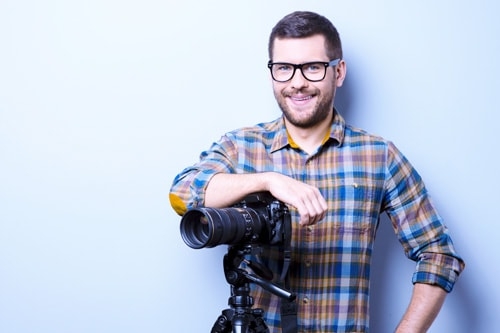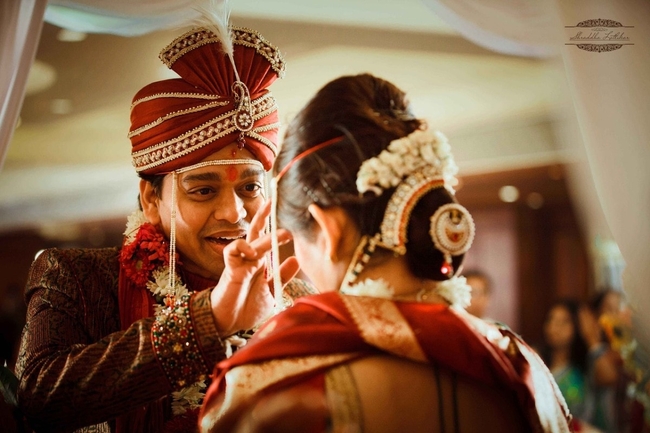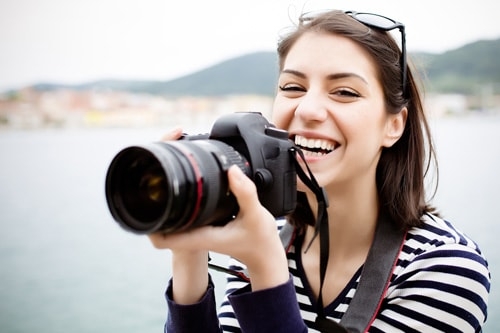Photography is fun and exciting. So, if you like taking pictures wherever you go and are looking for simple ways to improve your photography skills or master the basics, this beginner's guide to photography, will help you build a strong foundation. We have listed 25 simple tips that will help you become better at your craft and take those stunning pictures that you always wanted.
You must remember, though, that photography as an art form is a never-ending process of learning. It is an amalgamation of technical skill, ideas, and creativity. Even as a professional photographer, there will always be more you can learn. So you have to keep practicing. The more you shoot, the better results you will achieve. Remember, an ideal photograph is one that requires minimal editing.

Simple Photography Tips for beginners
1. Start with Basic Equipment
The range of photography equipment available today is astounding. New cameras are being launched daily with bigger sensors and better processing powers. We all want bigger and better gear. But do remember it is not the camera that makes the photographer. You should know how to use the equipment to create the image you have in your head. This is one of the basic photography tips which is obvious but harder to practice. You can begin shooting with your smartphone, regular cameras, or DSLR.
An entry-level DSLR (Digital Single Lens Reflex) is a compact camera and known to work best for newbies and amateur photographers. The reason being they are comparatively less expensive, easy to carry, manage, and understand.
Check out this link to see the best DSLRs available for beginners.
Buy a compact tripod, so that you have a steady platform to hold your camera.
As you begin your photography journey, you can gradually add more camera accessories to your kit bag.
2. Understanding the Basics - Camera Settings
Camera settings are an essential element of photography that you need to master. Exposure is the key to taking a great picture. Aperture, shutter speed, ISO combine to create an exposure. All three settings, when combined, control the amount of light reaching the sensor. Find the correct and appropriate balance of these settings before taking a picture. A photography guide which explains the basic concept of aperture, shutter speed, and ISO will clear your basics and will help you to apply these creatively in your journey ahead.
3. Practice, Practice, Practice
Here are some photography tips for you: Shoot pictures every single day. That is the only way you will get better at what you do. Start a 365DayProject.
Use Pinterest to create some creative boards for inspiration and curate your best shots that follow a particular style. Don't be afraid to experiment. You will learn a lot in the process.
4. Use Appropriate Lens
In any genre of photography, choosing the right lens is crucial for getting perfect, sharp images. A lens helps to configure the picture's quality and enhances the desired effect. Before taking any shot, make sure the lenses are clean. Do not clean lenses from inside, as they might get damaged. There are different lenses used on different occasions. For example, you shoot small objects or insects on a regular basis, then you would need a macro lens to capture details and make the object look bigger.
Zoom Lens or Prime Lens
It all depends on what and where are you shooting. First, let us look at the difference. A lens with a fixed focal length is a Prime Lens, while a lens that has a variable range of focal length is a Zoom Lens. With prime lenses, you have to move back and forth with the camera to view your subject. Zoom lens helps you to stand in one position, and its focal length will keep marking the distance.
Prime Lens provides you a shallow depth of field. It is better for low light photography. It also offers better sharpness and image quality. Zoom Lens brings you versatility, portability and all in one, is a less expensive deal.
Depending on your requirement, choose your lenses wisely and carefully so that they can serve you in most of your working situations.
5. Use Automatic Mode
As a beginner, it is difficult to understand all the manual settings and use them effectively. The good part is, auto mode always works, whether it is dim or too bright. The automatic mode adjusts the settings accordingly, and it becomes easy for the photographer to focus on the subject. You won't have to adjust Shutter speed and ISO sensitivity. You can entirely put your focus on composition. You would not need to think about light exposure and frequency.
Auto mode is a learning tool for amateur photographers. You will eventually begin to understand the exposure triangle. It will help you to manage manual settings better for later use.
6. Work On The Visuals
Photography being an art form, turns out to be a great way of communication. Many times, a picture describes an emotion better than an individual itself. It depends on how creative you can be with what you have. If you use strong visual elements, the photo can be more appealing and practical to the viewer. Use colors, lights, objects, and shapes to fill the details and bring a texture to the image. It will help to showcase your visuals in a very effective way.
7. Learn To Compose
Here are some photography ideas for beginners to compose a mesmerizing picture:
- Focus on the symmetry. It will tell you where the right angle is for the frame
- Use natural frames such as windows, open doors, curtains to make it look for natural
- Contrast is an excellent storyteller, and it is even better when used between the subject and the background
- Keep both the eyes on action and center the dominant eye.
- Patterns are better when colliding. They enhance the aesthetic environment and the subject
- Use diagonals for uneven location. It will create geometry for you
The composition is essential while framing the view. The right balance can strike a viewer's mind for a longer time.
8. Focus on Prime Area and Visualize
Many photography guides will tell you this, but only a creative mind can execute it. Imagine standing in a scenic location, wishing to capture it all in a photo. Now, think of how you can perfectly settle the view in the picture. To locate the desired shot, observing the place will be the first step. Look around and mark the distance. Focus on the prime area, visualize the kind of image you want to capture. Change the settings accordingly and go through the picture once. Make sure to visualize before taking a shot.
9. Learn The Rule Of Thirds
The Rule of Thirds is quite popular in the world of photography. It is usually learned by beginners in photography in the first ever lessons. The use of four lines creates the rule of thirds. You keep two lines horizontally and two lines vertically so that it all together makes a grid of nine squares. So you divide the picture in these boxes to get a better knowledge of the image and the view. The geometry helps in the positioning of the subject.
The theory is to put the points of interest on intersections to mark the balance of a photograph and make it look more professional. It is observed that the viewer unknowingly focuses on the points of intersection more than the rest of the picture. Remembering these tips will help you take better photos.
Read in detail about The Rule of Thirds here
10. Focus On Lighting
Balanced lighting is one of the essential elements of a good picture. Once you have taken a picture with proper lighting, half your work is done. Well, adequate lighting is not only restricted to the moon, sunsets or starry skies. It is again, the art of manipulation.
A good photographer knows how much light is required according to the conditions. Whether you are shooting in natural light or with an artificial source, see how you can use it to make your pictures better.
Read about Golden hour photography – the window of time in the morning and evening, when the sun is at a low angle, that provides photographers with a magical quality of light that makes their photos pop.
In darker lighting conditions, artificial lights will be required more than natural ones to create clarity in the picture. By using extra light onto your subject, you will be able to fill in those ugly shadows. It is all about balancing light and creating contrasts even in an ordinary location. For handheld pictures, using flash would be preferable than waiting for the bright light to get in shape. Wedding photographers can better understand the change one artificial light can make in a fast moving wedding photoshoot.
11. Don't Underexpose or Overexpose the Highlights
Just as you know, Aperture, Shutter Speed, and ISO sensitivity play an influencing role in brightening an image. Out of which, shutter speed and aperture are the exposers. For a brighter view, the shutter needs to be slower, and the ISO number needs to be larger. And for a darker look, the shutter has to be faster and the ISO number needs to be lower. These quick photography tips for beginners is a little difficult to understand but once you get it, it will save you a lot of time.
A picture is underexposed when it is darker than required while an image is overexposed when it is too bright for the frame. Both the defaults can make a good photo look starkly defying. For correct exposure, make sure that both the shadows and highlights are balanced with proper brightness and darkness. The balance can be managed by setting and resetting shutter speed and ISO sensitivity until it reaches the correct exposure. One of the food photography tips for beginners that you should keep in mind is that as the wet part of the food tends to overexpose quickly due to the reflection. You should use gobos or softer light to manage such reflections.
12. Avoid Blurry Pictures
Blurry pictures are a big disappointment for the viewers and the photographer. Sometimes, the lights, the ambiance, everything is correctly set, and when you check the pictures, they turn out to be blurry flashing disappointment all over. If this happens frequently, you can turn on the autofocus mode to get a clear picture. If the subject is moving, use manual settings and shutter speed to minimize the chances of it getting blurry any further. If the subject is not moving, use AF-S or One Shot to get the focus on your subject and avoiding the picture from getting blurred. Getting the picture sharp is one of the easy photography tips for beginners which you pay attention to.
The only exception is when you are intentionally clicking a blurred image based on your creative decisions.
13. Camera Should Be Still
You witness an awe-inspiring landscape where everything is still, quiet and perfect. You get ready to shoot it, and after taking a photograph, you take a quick look at it. The picture looks blurry, distorted, and without any geometry. You wonder what went wrong and you notice that all this time, your camera has been shaking because you forgot to bother about it.
Buy a camera stand or a tripod to ensure the stillness of your camera and guaranteed sharp photos.
Don't depend on your ability to hold the camera still for long periods. DSLR photography for beginners is all about keeping such small but important things in mind which becomes a stepping stone to do something bigger and better in the future.

14. Work According To The Straight Lines
The straight lines convey several moods, and each viewer has different opinions while viewing them. Be it vertical lines or horizontal, both portray a diverse choice of interest. For example, you put a line in the middle of the picture, it will divide them in half, and now each part will have a different story. It leaves a dramatic impact on the viewer, just like a tree divided into two halves vertically. Especially for a classic background, straight lines are a perfect choice.
Once you start looking at them, there is no way you can escape. It is like a composition building in a viewer's mind. So be sure to compose correctly during a shot because editing cannot fix them in a natural way they are.
15. Learn about Filters And Their Usage
Here is a tip for digital photography beginners: Use the right filters. In digital photography, camera lens filters are used to improve the texture and make the pictures look more eye-catching.
These filters include:
Linear & Circular Polarizer is used to Reduce Glare, Improve Saturation. Their subjects are mainly Sky / Water / Foliage in Landscape Photography. Neutral Density (ND) which helps to Extend Exposure Time mainly used for Waterfalls, Rivers under bright light.
Graduated Neutral Density (GND) controls Strong Light Gradients and Reduces Vignetting. These are generally used for dramatically lit landscapes.
UV / Haze helps to Improve Clarity with Film Provide Lens Protection and can be used for any subject matter.
Warming / Cooling is used to Change White Balance. Its subjects are Landscapes, Underwater, and special lighting.
You must learn the use of these filters before applying them anywhere.
16. Capture Carefree And Then Enhance
As a photographer. If only you cared about perfect shots and remain conscious about every picture, you'll lose the grip ultimately. Let your delicate fingers to go with the flow. Capture without 'what ifs' and 'if not.' Shoot everything that fascinates you and don't be conscious about results. Once you get that one irreplaceable moment in your camera, enhance it a little bit with highlights and post process for better results. After editing, check up on the minor details and get done with it. Your masterpiece is ready to be appreciated.

17. Learn about Post-Processing
No one can deny the fact that many beautiful pieces have been created through post-processing. Almost every shot that a photographer takes is post-processed before being finalized. It helps to beautify the image. It also works as a great patch to fix the underlining parts. After a picture is taken, it is helpful to post process it to modify the unpolished areas. But remember, there has to be a balance. It should not be overdone; one of the paramount photography tips for beginners; do not overdo!
The best photographs are the ones that need minimal editing!
Read about the best 26 Photo Apps that let you shoot, edit, and organize photos on your phone.
18. Tips For Portrait Mode
Below are some quick photography tips for beginners trying to use portrait mode:
-Frame your subject. It provides a theme to the picture
-Use wider angles to capture better and memorable shots
-Try to be playful with the background
-You don't have to frame the picture vertically only; you can go for horizontal as well even in portrait mode
-Find an angle to hold your camera
-Play with the subject and fill the background
-Try to use natural lights if possible
19. Tips for Shooting in the Dark
Here are some easy photography tips for beginners to photograph in the dark:
-Camera stability is essential. Otherwise, it will make the picture shaky and blurred
-Increase the ISO to its maximum limit. Take a few shots to check its effect
-Decrease the Shutter speed as much as possible so that it can allow more light to enter the camera eye by keeping it open
-Keep the flash off if possible. It will make it look more natural
20. Keep the Camera Clean
Keep the camera clean and protected to photograph better and efficiently. Don't use a rough surface to clean the lenses. Instead, use a microfiber cloth and a dust blower. Make sure that the body and the memory card is secure before using it.
Here are some photography tips for beginners so it can prevent your camera from any damage:
Prevent the front lens from water and rains
Use gaffer tape for buttons and compartment openings
Avoid handing Memory Card from wet hands
Always keep the memory card in the case
Keep the bags and pouches clean so that no dust can enter the camera
You can also keep silica gel in one of the pockets to avoid moisture
A damp microfiber cloth would work to clean the front lens and other lenses
Avoid changing the lens in dust and moisture
21. Keep Smaller Memory Cards
"One Large Memory Card or Many Small Memory Cards?" This question strikes many.
You can always keep a large memory card in camera but what if it gets lost? This is where smaller cards come into play. You can arrange records in them according to the occasion, so you don't have to shuffle all the pictures. These are easy to protect and organize. They are easy to carry while traveling. And once they are full, you can easily replace them with others and find a safe place to secure the filled ones.
22. Read and Get Inspired
There are several photography blogs out there which regularly publish resources, articles, reviews, and photo stories designed to keep you informed and inspired with the latest in photography. If you prefer books, check out our resource on the best photography books for beginners.
Read more in detail about the Blogs you must follow as a photographer.
23. Photography and Creative freedom
One of the challenges that photography for beginners comes with is that it is quite challenging to pick one category to master their career. However, where there is an interest, there is a way. Try to photograph things you are passionate about. Explore different genres of photography, to level up your skill-set before you decide the area of specialization.
24. Enjoy the Learning Process
Photography for beginners is fun and exciting. Enjoy the learning process. Try looking at familiar surroundings with a fresh perspective. Don't worry about how long it will take you to learn. Click as many images as you like unless you get that one clear-cut shot. There is so much more than you think, your little camera can take. Try to experiment with every possible angle and utilize every possible feature. It will provide you insight on shape and geometry. Be creative about the background, edits, shadows, highlights, and other functions.
25. Always Carry your Camera
Here is another one of the many free mobile photography tips for beginners that you read: Smartphone, regular camera, or DSLR, always carry one with you. That is the only way you can capture those treasured moments and who knows you might get some candid masterpieces!
I hope this photography tips for beginners guide will help in your photography journey. Surely great things are waiting for you. All you need to do is, keep up the focus, experiment a lot, and discover the unseen. A photographer is an artist, which means no rule stands in the way.














